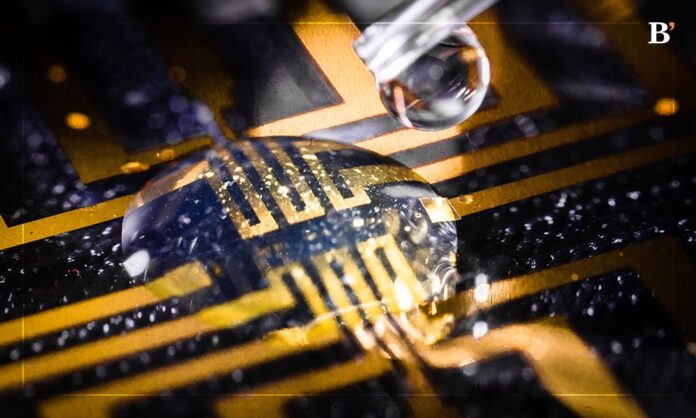Key Highlights
- A breakthrough study published in the journal Science by researchers at Linköping, Lund, and Gothenburg universities in Sweden demonstrates the potential for fully integrated electronic circuits in living organisms by successfully growing electrodes in living tissue using the body’s endogenous molecules as triggers.
- This achievement is a major step towards linking electronics to biological tissue, which is crucial for understanding complex biological functions, developing future man-machine interfaces, and combating diseases in the brain.
Previous attempts at creating conventional bioelectronics, developed in parallel with the semiconductor industry, have a fixed and static design that is challenging, if not impossible, to integrate with living biological signal systems.
The Swedish researchers developed a method for creating soft, substrate-free, electronically conductive materials in living tissue by injecting a gel containing enzymes as the “assembly molecules.”
The gel’s contact with the body’s substances changes its structure, making it electrically conductive. Then, depending on the tissue, the researchers can adjust its composition to start the electrical process. Especially there is no need for genetic modification or external signals like light or electrical energy, making this technique different from previous experiments.
Electrode Formation
The researchers successfully achieved electrode formation in the brain, heart, and tail fins of zebrafish and around the nervous tissue of medicinal leeches, demonstrating that their technique can target the electronically conducting material to specific biological substructures and create suitable interfaces for nerve stimulation.
The injected gel unharmed the animals, and their immune systems were considered in the experiments. The researchers overcame challenges related to animal cell structure and developed electrodes that were accepted by the brain tissue and immune system.
Professor Roger Olsson at the Medical Faculty at Lund University, who also has a chemistry laboratory at the University of Gothenburg, took the initiative for the study. He was inspired by the electronic rose developed by researchers at Linköping University in 2015 but faced the challenge of the difference in cell structure between plants and animals.
Creating a gel with enough structure and the right combination of substances to form electrodes in such a soft mass took many years to solve.
Future Research Is Needed
The researchers’ breakthrough paves the way for a new paradigm in bioelectronics, where implanted physical objects are no longer necessary to start electronic processes in the body. Future research will be essential for fully integrated electronic circuits in living organisms.
While the study’s results are promising, the researchers acknowledge that they still have several problems to solve. However, their study provides a good starting point for future research, according to Hanne Biesmans, a PhD student at LOE and one of the main authors.




